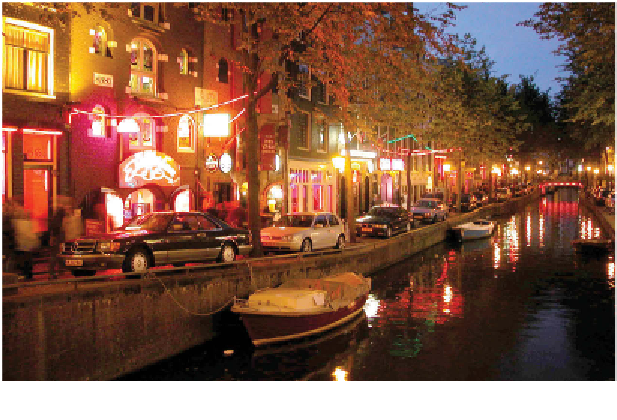Travel Reference
In-Depth Information
In Amsterdam's Red Light District, sex workers are unionized.
train to glassy skyscrapers to work for giant corporations in nearby oi ce
parks, but no skyscraper violates Haarlem's downtown cityscape, which is
still dominated by elegant old gables and church spires. In Haarlem, the latest
shopping malls hide behind Dutch Renaissance facades. Streets are clogged
with café tables and beer-drinkers. h e cathedral towers over the market
square with its carillon ringing out its cheery melody as policemen stroll in
pairs—looking more like they're on a date than on duty.
Two blocks behind the cathedral, a cof eeshop (a place that legally sells
marijuana) is i lled with just the right music and a stoned clientele. People,
enjoying a particularly heavy strain of marijuana, stare at their rolling papers
as if those crinkly critters are alive. Others are mesmerized by the bubbles
in their bongs.
And down by the canal, a fairytale of cobbled lanes and charming houses
gather around a quiet little church, creating a scene right out of a Vermeer paint-
ing. But this neighborhood is dif erent. Lonely men, hands in pockets, stroll as
they survey prostitutes who giggle and l irt from their red-lit windows.
While the USA is inclined to legislate morality on issues such as pros-
titution, gay rights, and drugs, much of Europe takes a dif erent approach.
While countries dif er, the general European sentiment is not to make a law
forcing someone to be what the majority considers “moral.” Instead, European
law tolerates “immoral” acts as long as they don't hurt someone else.















































































